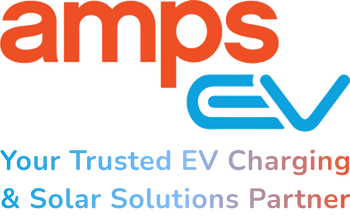Solar & Battery
Our Mission
ASPS EV mission is to provide our customers with the most innovative, reliable, and cost-effective energy efficiency and renewable energy solutions that respect their environment and the communities we serve. We are committed to delivering clean, renewable solutions that reduce global carbon emissions and promote sustainability.
We strive to make the world a better place through improved energy efficiency, sustainably sourced energy solutions, and by empowering individuals across Australia with clean energy access.
COMMERCIAL SOLAR FINANCIAL INCENTIVES
In the rapidly growing field of renewable energy, commercial solar projects play a vital role in reducing carbon emissions and promoting sustainability. Various certificates and incentives are available to encourage the adoption of solar energy systems by providing financial support, reducing installation costs, generating additional revenue and contribute to environmental sustainability.
Here, we explore the benefits of three essential certificates – STCs, LGCs and VEECS commercial solar projects in Victoria (VIC) and New South Wales (NSW).
STCs are designed to support small-scale renewable energy installations, including solar photovoltaic (PV) systems, with a capacity of up to 100kW. The number of STCs awarded is based on the system’s expected electricity generation over a set number of years.
Benefits:
- Financial Incentive: STCs represent a tradable commodity, allowing solar system owners to sell them at market rates to aggregators or liable entities.
- Cost Reduction: By selling STCs, businesses can offset a portion of the upfront installation costs, making solar power more financially viable.
Real-Life Example:
A shopping mall in NSW plans to install a 50kW solar PV system on its rooftop. Through the STC scheme, the mall receives 500 STCs, which can be sold to an energy retailer, reducing the upfront cost of the solar project by AUD $20,000.
LGCs are designed to support large-scale renewable energy projects, typically with a capacity of over 100kW. They are generated based on the amount of renewable energy produced by the system.
Benefits.
- Additional Revenue Stream: Solar farms and large-scale commercial solar installations can generate LGCs, which can be sold to meet the renewable energy obligations of liable entities.
- Long-Term Income: LGCs provide an ongoing income stream throughout the lifespan of the solar project.
Real-Life Example:
A 5MW solar farm in VIC generates approximately 7,500 LGCs annually. The project developer can sell these certificates to electricity retailers or traders at the current market price, generating an additional revenue stream of around AUD 225,000 per year.
Victorian Energy Efficiency Certificates (VEECs): VEECs aim to promote energy efficiency measures in Victoria by incentivizing businesses and individuals to undertake energy-saving projects.
Benefits.
- Financial Support: Businesses that implement energy-efficient solar projects can earn VEECs, which can be sold to energy retailers.
- Cost Recovery: VEECs help recover a portion of the investment made in energy-efficient technologies, encouraging more businesses to adopt renewable energy solutions.
Real-Life Example:
A manufacturing plant in VIC replaces its outdated lighting system with energy-efficient LED lights. By doing so, they earn VEECs, which they sell to energy retailers for AUD 4,000, offsetting a significant portion of the lighting upgrade costs.
We guarantee cash flow positive investments for commercial solar installations.
A cash flow positive commercial solar installation is one that generates more revenue from its solar energy production than it costs to operate and maintain. This means that the business that owns the solar installation will see a positive cash flow from the installation, even after taking into account the upfront cost of installation.
There are a few factors that can affect the cash flow of a commercial solar installation. These include the size of the solar installation, the amount of sunlight that the installation receives, the cost of electricity in the area, and the financing terms of the solar installation.
To guarantee cash flow positive investments for commercial solar installations, you need to make sure that the solar installation is sized correctly for the business’s needs. You also need to make sure that the installation is located in an area that receives a lot of sunlight. Additionally, you need to make sure that the business can afford the upfront cost of the installation and the ongoing cost of operation and maintenance.
- Choose the right size solar installation. The size of the solar installation should be based on the business’s energy needs. A solar installation that is too small will not generate enough electricity to offset the business’s energy costs. A solar installation that is too large will be more expensive to install and maintain.
- Install the solar panels in an area that receives a lot of sunlight. The amount of sunlight that the solar panels receive will affect how much electricity they generate. Solar panels that are installed in an area that receives a lot of sunlight will generate more electricity than solar panels that are installed in an area that receives less sunlight.
- Choose a financing option that fits the business’s needs. There are a variety of financing options available for commercial solar installations. The business should choose a financing option that fits its budget and its cash flow needs.
- Monitor the solar installation’s performance. The business should monitor the solar installation’s performance to make sure that it is generating as much electricity as it should be. If the solar installation is not generating as much electricity as it should be, the business may need to make adjustments to the installation or the financing.
- Loans tied to building, not owner
- No capital or security required
- Repayments collected through council rates
- Up to 100% finance including hard and soft costs
- Purchase your system outright
- The fastest avenue for immediate returns
- Suitable to companies that prefer to own their own system that have access to low-cost capital
- Customers who are eligible for the Instant Asset Write Off can double down on their investment returns
- No up-front cost
- System often pays for itself through the energy savings generated
- Spread the cost across 5-10 years
- Lock in set finance repayments lower than the solar savings
- Operational risk is carried by you
- Customers who are eligible for the Instant Asset Write Off can double down on their investment returns
- No capital outlay
- Lock your energy at a fixed rate
- The maintenance and servicing of the system is included for the term of the agreement
- The PPA energy rate is set from Year 1, providing long-term price certainty
- Slash your operational risk. Ownership and maintenance lies with Smart Commercial Solar
- Loss in energy generation is covered if the system underperforms

Corporate Social Responsibility (CSR)
At AMPS EV, we take Corporate Social Responsibility very seriously and believe in giving back to our staff and community. When it comes to our people and communities we promote the following values:
- Ethics and Integrity for accountability, honesty and openness in every aspect of our business.
- Protecting the environment and promoting a safe work culture, healthy life styles, work-life balance and Innovation where every employee is empowered to transform ideas into value.
- Respect – where we treat everyone with dignity and provide a secure work environment.
